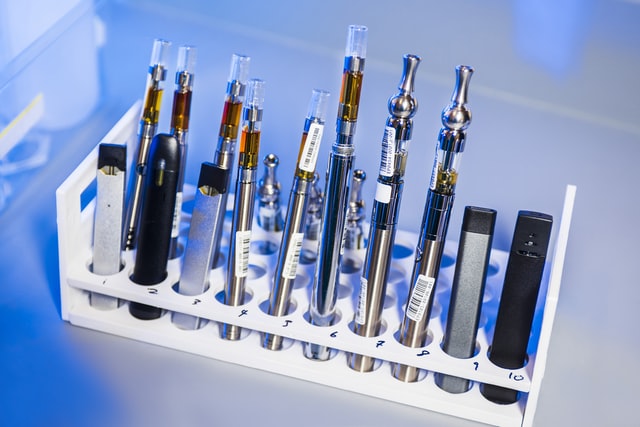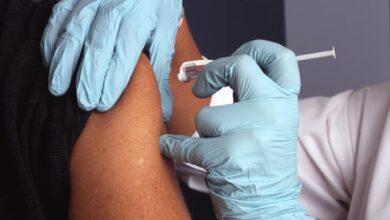Vaping and Coronavirus: Why Teens and Adults are at Risk

Lives across the globe have been put to a halt as the world desperately awaits a cure to the dreaded coronavirus disease. Experts have been racing to find the cure, testing possible vaccines on volunteers who have previously recovered from the virus. We discover more about the virus with every day that goes by and recently, a new correlation has been identified.
Vape Culture
As of 2018, the vape industry became one of the most successful industries in the economic market. There are nearly 40 million vapers across the globe and statisticians expect to see this number rise to 55 million by 2021. With so many people hooked on e-cigarettes, you might wonder what the hype is all about.
Read More »
Vapers across the globe usually vape for either of two reasons: to quit smoking or recreationally. Tobacco users know the feeling of itching for a cigarette. When someone becomes addicted to cigarettes, they typically are addicted to the nicotine within. By switching to e-cigarettes, users can control the amount of nicotine they inhale and thus, curb their cravings. Other people, such as teenagers may vape simply for recreational purposes. This means that they just enjoy blowing clouds of smoke or vape with their friends.
New Regulations on Vaping
As of 2020, several states such as New Jersey, Rhode Island, and New York passed bans on flavored vape products. Additionally, the age minimum for any purchases of vape-related products was brought up to age 21 across the nation. These recent regulations were enacted to prevent teenagers and underage users from becoming addicted to such substances. Studies have recently shown that flavored e-liquids have the potential to damage white blood cells in the immune system and reduce our natural health defenses. Regardless, although vape culture has been around since the early 2000s, there is still much to discover about effects on the human body.
A New Correlation: Vaping During the Pandemic
Results have recently been published from a new study on the relationship between vaping and a higher risk of contracting COVID-19. The results claim that younger vapers are five times more likely than non-vapers to contract the disease. Tobacco smokers were seven times more likely. Of course, this contradicts previous data stating that the virus was less likely to infect younger people.
This study was done on nearly over 4,300 people aged 13 to 24. The group of participants was inclusive of all identifying factors such as ethnicity, gender, education, age, and body mass index. These participants were also chosen based on how well they had followed state orders to social distance. They were interviewed about their vaping habits and if they had tested positive for COVID-19. The researchers concluded the study after they had found that a majority of the teenagers who had vaped experienced more symptoms of COVID-19 than non-vapers.
This evidence supports the theory by many researchers that vaping does harm our lungs. They believe that it decreases our body’s immunity to such diseases, and this evidence shows that they may be right. Vaping also goes directly against safety guidelines. By using an e-cigarette, vapers are constantly touching their faces and thus, transferring the disease to themselves. Also, the cloud that a vape device produces can potentially carry COVID-19 particles away at least 6 feet.
When the participants were first questioned, researchers had to identify whether the symptoms they had experienced related to the pandemic or to EVALI, a lung disease related to vaping. Researchers suspect that frequent vapers may already have a weakened respiratory system and this may make them more susceptible to becoming infected. Statisticians now expect to view a rise in positive cases among teenagers and adults who have vaped.
COVID-19 attacks the respiratory system where it enters initially. It is most commonly inhaled through the nose or mouth and it begins multiplying until it can infect various organs such as the lungs. Anyone who has become infected may experience respiratory-related symptoms including shortness of breath, dizziness, coughing, and typical symptoms of the common cold. The difference between the symptoms is that any caused by COVID-19 can be fatal and potentially result in death.
Experts are calling on the federal government to temporarily disable the e-cigarette market for the duration of the pandemic in an attempt to reduce the spread of the virus. Another theory that could have influenced the results of the study is that when smoking socially, teenagers or adults may be passing around a vape device. If this occurs while social distancing precautions are in place, the virus has more room to spread. This interaction is highly unsafe and puts all of the participants at a higher risk of infection.
Experts advise everyone to refrain from vaping, whether recreationally or socially to protect yourself from the virus. While there has not been any information as to whether vaping will worsen symptoms of COVID-19, it is best to avoid doing so at all during this time. This will not only protect you, but it will help prevent the spread of the virus to your family and friends. Teens can find other ways to fulfill their desires for social connection. Some ways include playing video games, watching movies or TV shows together, or simply going to the park.
Be sure to maintain social distancing precautions as you go about your daily life. This includes washing your hands frequently, using hand sanitizers, disinfecting surfaces, wearing a mask in public, and staying at least 6 feet away from others. By doing something as little as this, you are doing your part in flattening the curve.





